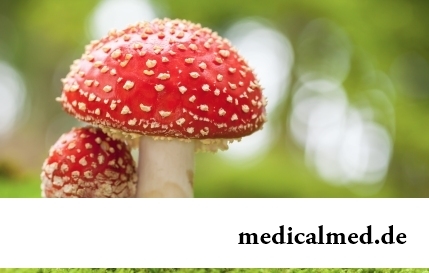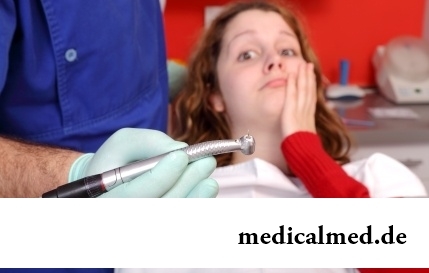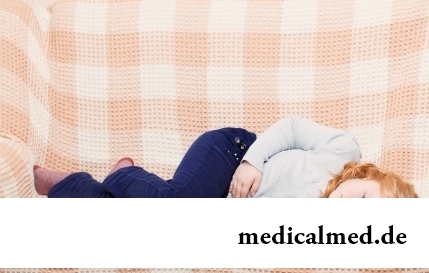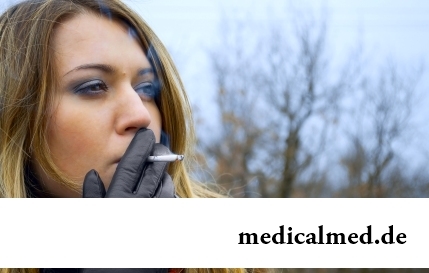





Leushmaniosis
Short characteristic of a disease
 The leushmaniosis is an infectious disease which is caused by the elementary parasites – leyshmaniye. As carriers of an infection small blood-sicking insects, generally – mosquitoes and mosquitoes act. In city conditions the leushmaniosis extends through sick people and dogs. The disease gained distribution in Uzbekistan, Transcaucasia, Turkmenistan, in the territory of some countries of Asia and Africa. The outbreaks of an infection are noted during the period from May to October when the disease-producing factor shows the greatest activity. In risk group persons, newcomers get to the local center. Permanent residents of problem regions get sick with a skin leushmaniosis much less often.
The leushmaniosis is an infectious disease which is caused by the elementary parasites – leyshmaniye. As carriers of an infection small blood-sicking insects, generally – mosquitoes and mosquitoes act. In city conditions the leushmaniosis extends through sick people and dogs. The disease gained distribution in Uzbekistan, Transcaucasia, Turkmenistan, in the territory of some countries of Asia and Africa. The outbreaks of an infection are noted during the period from May to October when the disease-producing factor shows the greatest activity. In risk group persons, newcomers get to the local center. Permanent residents of problem regions get sick with a skin leushmaniosis much less often.
Types of a leushmaniosis
Specialists allocate two main forms of a disease: leushmaniosis skin and leushmaniosis internal (visceral).
The visceral leushmaniosis begins gradually. The incubation interval lasts from 10-20 days to several months. At the first stages the leushmaniosis proves small disorders of intestines and increase of weakness. Increase in a spleen, lymph nodes and a liver belongs to typical signs of a leushmaniosis. Reaches that at the height of a disease the spleen reaches the huge sizes and because of increase in weight falls to a small pelvis. Also at patients discoloration of integuments (becomes pale earthy) and different emergence of rashes, mostly – pustular is observed. In certain cases the visceral leushmaniosis can cause hypostases, an anemia, bleeding and weight loss development.
Statement of the exact diagnosis is carried out after a puncture of marrow and a spleen regarding existence of leyshmaniye.
City skin leushmaniosis
Symptoms of a skin leushmaniosis are shown in 3 - 8 months. In that place where parasites were implemented into an organism, there is a small hillock with a diameter of 1-4 mm. In process of development of a leushmaniosis it increases in sizes and becomes covered by a scaly crust. Removal of a hillock is fraught with formation of the bleeding ulcer covered with a purulent plaque and infiltrate which disintegration causes expansion of a zone of skin defeat. Such sores on a body of the person is from 1 to 10 pieces. As a rule, they are located on a face and hands, that is, in those places which are available to mosquitoes.
Skin leushmaniosis of rural type
This form differs in shorter incubation interval. In the place of penetration of activators the cone-shaped hillock appears. It quickly grows in the sizes and quite often 1-2 cm have a diameter. In the center of a hillock there is a necrosis of fabrics which after rejection form an ulcer. If it is a little ulcers, then they happen very extensive, having 6 cm a diameter. A large number of small ulcers (tens and hundreds of educations) constrains increase in separate zones of defeat. At the diagnosis of a skin leushmaniosis symptoms keep for several months then ulcers are cleared.
Let's notice also, as the city, and rural skin leushmaniosis can develop into a chronic form which on a number of signs reminds a lupus.
Diagnosis of a disease
All forms of a leushmaniosis need to be distinguished from a sarcoidosis, a leprosy, grumous syphilis and a tubercular lupus. Differential diagnosis is carried out on the basis of anamnestic supplied and the information on stay of the patient in the local centers. Specialists obtain final data on existence of an infection after the research of analyses which allow to define existence of leyshmaniye in an organism.
As for specific differences of the considered infection from other diseases. If the tubercular lupus strikes preferential children, then the leushmaniosis which treatment often is required also to adults does not depend on age of the patient. Besides, hillocks on skin at a leushmaniosis are much more dense, so – there is no effect of fall of the probe. Also It should be noted that rashes are not inclined to an ulceration, though are located on hems. The last – deeper and extended, while at a lupus hems most often superficial.
 The skin leushmaniosis differs from grumous syphilis in the place of localization of rash. As a rule, it is located on open body parts, has the smaller density of hillocks, ulcerates later and does not give a positive serological test on syphilis. There are differences and in character of hems. At a leushmaniosis they more involved, and at grumous syphilis – mosaic.
The skin leushmaniosis differs from grumous syphilis in the place of localization of rash. As a rule, it is located on open body parts, has the smaller density of hillocks, ulcerates later and does not give a positive serological test on syphilis. There are differences and in character of hems. At a leushmaniosis they more involved, and at grumous syphilis – mosaic.
Leushmaniosis – treatment and prevention
To patients appoint Monomycinum. It is entered intramusculary 3 times a day. A standard dosage – 250 000 PIECES. The course of treatment lasts 10-12 days up to that moment until the skin leushmaniosis disappears completely. At an aggravation of symptoms it is recommended to use monomitsinovy ointment.
Prevention of a skin leushmaniosis is based on fight against mosquitoes and mosquitoes, extermination of stray dogs and rodents. In recent years the skin and visceral leushmaniosis is tried to be prevented by means of preventive introduction of live cultures of the activator.
The first vibrator was invented in the 19th century. It worked at the steam engine and intended for treatment of female hysteria.

The phenomenon of improvement of a condition of the patients at administration of drugs who are not containing active agents, so-called effect of placebo is known...
Section: Articles about health
Mushrooms - the surprising inhabitants of our planet having a set of wonderful qualities. Thanks to one of them, a mold mushroom of Penicillium notatum, the first natural antibiotic - penicillin was received nearly 80 years ago. The mankind is obliged to this opening миллио...
Section: Articles about health
Statistically, can only one of ten of our compatriots brag of a decent condition of an oral cavity. Six teeth affected with caries are the share of the average Russian. For comparison, this indicator for Europeans is almost six times less....
Section: Articles about health
Epilepsy is one of widespread neurologic diseases. To parents, whose children suffer from this illness, it is necessary...
Section: Articles about health
Dietary supplements (dietary supplements) for the last decades were so thoroughly included into our life that, apparently, it is already impossible to find the person who at least once did not try them. At the same time, most of our compatriots have a vague idea about...
Section: Articles about health
Statistically, at the address to doctors seven of each ten patients complain of a headache. Actually it is much more people who are periodically feeling unpleasant feelings such. Many people, apart from a headache the reason for serious fears, prefer to muffle independently the next attack medicines. Such behavior is extremely careless, especially if this symptom appears regularly and is followed by other signs of an indisposition. Constants head Bol...
Section: Articles about health
Life expectancy in various regions of Earth is not identical. Exert impact on it social stability, economic бл...
Section: Articles about health
The majority of gynecologic diseases prove three main signs, each of which speaks about need of a visit to the gynecologist. Certainly, it is possible to establish the exact diagnosis only after inspection, but on the basis of some signs it is possible пр...
Section: Articles about health
Long time antibiotics were considered as a panacea from all diseases and were appointed even at insignificant symptoms of an infection. Even now not everyone knows in what force of antibiotics how and when they should be accepted. Let's discredit 7 popular myths about such drugs....
Section: Articles about health
Any person who faced a disease knows that treatment costs expensive. It belongs also to consultations qualified the specialist...
Section: Articles about health
Maternal milk is the best food for the newborn. It is the unique natural product containing an optimum set of nutrients, and which is best adapted in order that the baby normally developed and it was protected from harmful fa...
Section: Articles about health
Diapers for adults – individual one-time means of hygiene which in some situations is irreplaceable and from such situations any person is not insured. Though nobody perceives need of their use with enthusiasm, however without such means already problematic situation could be heavier....
Section: Articles about health
Vitamin complexes belong to the most popular drugs, probably, in our country there is no person who was not hearing about a floor...
Section: Articles about health
Residents of big cities quite often have a disease which is known as the syndrome of chronic fatigue (SCF) today. This illness affects the people belonging to various social and demographic groups and living on all continents. Most of all SHU to a podverzha...
Section: Articles about health
Bathing in broths of medical flowers and plants (phytobathtub) was eurysynusic since Cleopatra who is a good judge in all that concerns beauty and health. And today phytobathtubs is the simple and available means allowing not only to remove nervous tension, but also to recover from many diseases. Grass bathtubs at treatment of cold, osteochondrosis, radiculitis, skin diseases, and also diseases of urinary tract and vessels are especially effective....
Section: Articles about health
The state of health of the person in many respects depends on food. The organism will well function if during food it are...
Section: Articles about health
Smoking not only exerts a negative impact on the state of health of the consumer of tobacco products, but is an air polluter the substances potentially dangerous to people around. In recent years significantly the number of people, стремящ increased...
Section: Articles about health
Bees – really unique beings. Practically all products of their life activity are used by the person. Since the most ancient times medicinal properties of honey and other substances received in the course of beekeeping are known. The fact that all these products are recognized not only national, but also official medicine is especially significant. About influence and routes of administration of bee "drugs" the speech in this article will also go....
Section: Articles about health
Within several decades of our compatriots convinced that the use of butter nasty affects on...
Section: Articles about health
The cosmetics intended for improvement of a condition of skin, nails and hair are used by each woman. Expenses on regular acquisition of the fashionable widely advertized products of well-known companies for many become very notable and significantly to an obrema...
Section: Articles about health
Physical activity is necessary for normal functioning of a human body. At a lack of the movement joints cease to function, muscles atrophy, cardiovascular activity is broken and the metabolism worsens. The modern city rhythm of life does not provide the person with an adequate exercise stress, additional - sport is necessary. Tedious tasks the huge number of the people having those or ин exists sport not all to liking, but also...
Section: Articles about health
Dark circles (bruises) under eyes – a shortcoming with most of which often fight against the help of cosmetics (proofreaders, salons...
Section: Articles about health
So, you resolved to lose weight. And now you try to understand what to begin with: from exercise stresses or a diet? And how to make that process of weight loss did not give you an inconvenience, and, on the contrary, brought joy?...
Section: Slideshow
Iodine - one of thirty most important microelements in our organism. The main role of iodine consists in synthesis of thyroid hormones of a thyroid gland - the substances which are responsible for the majority of exchange processes of an organism. It is known that thyroid hormones consist of iodine more than for 65%. The lack of iodine leads to decrease in production of hormones and, as a result, development of a hypothyroidism. The long condition of deficit can become a source of problems of the cardiovascular, bone, digestive SI...
Section: Articles about health
Each of us repeatedly noticed that the people having the same passport age are sometimes not similar on one-years at all. One...
Section: Articles about health
The climax, or menopause is the normal process of the termination of genital function of the woman which is followed by serious hormonal changes in an organism. Usually the menopause begins at the age of 50-55 years, but characteristics of this process are very individual. T...
Section: Articles about health
Such trouble as the milkwoman's attack, at least once in life happened almost to each woman. Prevalence of a disease is explained by the fact that the causative agent of an illness belongs to the so-called opportunistic microflora living on mucous membranes of any human body and which is becoming more active only under favorable conditions. If you had curdled allocations from a vagina, the itch and burning in external genitals, or painful feelings disturb at sex...
Section: Articles about health
